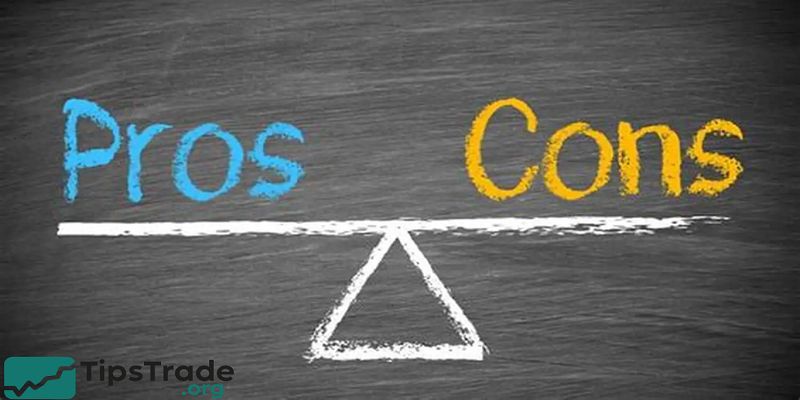Multi-timeframe trend analysis is one of the most reliable ways traders confirm trend direction, filter bad signals, and choose higher-probability trade entries. Instead of relying on a single chart, traders compare the price movement across higher and lower timeframes to understand the “bigger picture” and the short-term volatility inside it. This approach is widely used in forex, crypto, stocks, and commodity markets because price can move differently depending on which timeframe the trader is looking at. Visit tipstrade.org and check out the article below for further information
What is Multi-Timeframe Trend Analysis?
Why Traders Use Multiple Timeframes
Traders use multiple timeframes to analyze the market from both macro and micro perspectives. The higher timeframe shows the primary trend, while the lower timeframe reveals short-term opportunities.
For example, if the weekly chart shows an uptrend with higher highs and higher lows, a trader can drop to the 4-hour chart to wait for a temporary pullback before entering. This prevents chasing candles and reduces emotional decision-making.
In practice, many failures happen because traders take trades based only on a lower chart like M15 or M5. The signal might look strong, but the higher timeframe could be in a strong downtrend—making a loss more likely.
Multi-timeframe analysis is also used to filter noise. Lower charts produce many signals, but not all are valid. When signals agree across timeframes, traders call it “confluence,” meaning the setup has stronger confirmation.
This method reduces hesitation and improves confidence because entries are backed by structure, not hope.
>>See more:
- Trendlines in Technical Analysis: What They Are, How to Draw, and How Traders Use Them Effectively
-
Cyclical Trends: Understanding the Rhythms of Markets and Economies
-
Volume Analysis: Understanding Market Strength Through Trading Volume
How Higher and Lower Timeframes Complement Each Other
Higher timeframes help identify the dominant trend, institutional zones, and major support or resistance levels. These zones often act like invisible barriers where price reacts strongly. Lower timeframes provide better precision for entries, stop-loss placement, and trade management.
For example, a trader may mark a demand zone on the daily chart and then use a bullish candlestick pattern on the 30-minute chart to enter. The trade has both directional strength and strategic timing. This combination is what separates professional analysis from random entries.
Difference Between Multi-Timeframe vs. Single Timeframe Trading
Single timeframe trading is much simpler but riskier. A trader may see a breakout on the 1-hour chart and enter immediately, only to realize later that the daily chart was at major resistance.
This is how many beginners get trapped. Multi-timeframe trading reduces this risk by forcing the trader to check whether the breakout makes sense within the larger trend. According to Investopedia, multiple timeframe analysis is one of the core methods used in technical analysis because it adds confirmation and context.
Why Multi-Timeframe Analysis Matters

Multi-timeframe trend analysis matters because it provides clarity in confusing markets. Prices do not move in a straight line—they move in waves. Even in a strong trend, retracements happen. Without context, these retracements can be mistaken for reversals.
Benefits of multi-timeframe trend analysis:
- Filters false breakouts
- Confirms trend direction
- Improves entry and exit timing
- Works for swing, day trading, and long-term investing
- Helps identify high-probability setups
Research from well-known trading educators like BabyPips and trading academies show that traders who align signals across timeframes tend to have fewer emotional errors, fewer revenge trades, and more consistent decisions.
The market becomes easier to read because everything has structure. It becomes clear when price is trending, correcting, or ranging. This prevents traders from entering during market uncertainty.
How Multi-Timeframe Trend Analysis Works
Top-Down Analysis (Monthly → Weekly → Daily → Lower Charts)
The most common method is top-down analysis. Traders begin with a higher timeframe to identify the major trend and important zones. Then they work down to smaller charts:
| Trading Style | Higher Timeframe | Trade Time Frame | Entry Timeframe |
| Swing Trading | Weekly | Daily | H4 / H1 |
| Day Trading | Daily | H4 / H1 | M15 / M5 |
| Scalping | H1 | M15 | M1 |
Higher timeframe = direction
Mid timeframe = setup
Lower timeframe = entry
This method prevents random trading. For example, if the daily chart is bearish with lower highs and lower lows, the trader should avoid long entries on M5 or M15, even if momentum looks strong. Context matters more than temporary price spikes.
Choosing Timeframes Based on Trading Style
Different traders use different levels:
- Position traders look at monthly and weekly charts to hold trades for months.
- Swing traders focus on weekly, daily, and H4.
- Day traders rely on H4, H1, M15.
- Scalpers use fast charts but still confirm the main trend on H1 or M30.
A common rule used by professionals is “3-timeframe alignment.” If all three show the same direction, probability increases. If they do not agree, the trader waits.
Aligning Trend Direction Across Timeframes
Trend direction should be evaluated using:
- Market structure (higher highs/higher lows vs. lower highs/lower lows)
- EMAs or SMAs
- MACD momentum
- RSI overbought/oversold signals inside a trend
- Support and resistance
When all timeframes point upward, traders call it a “stacked trend.” When timeframes disagree, the market is in transition. This method helps traders stay disciplined because poor setups are eliminated early.
Timeframes for Different Trading Styles

Trend Following
Trend-followers use higher timeframe market structure to find dominant direction, then enter on pullbacks.
For example, if the weekly chart shows a strong bullish trend, a trend-follower waits for price to retrace to a moving average or demand zone on the 4-hour chart. Instead of chasing breakouts, they enter after a corrective move.
Traders like this often use Fibonacci retracements, 20/50 EMA, or price action patterns like bullish engulfing. Multi-timeframe analysis helps them avoid false reversals and hold trades longer.
Swing Trading
Swing traders look for medium-term moves lasting days to weeks. They usually analyze weekly and daily charts, then enter on H4. Multi-timeframe alignment is powerful here because swings often occur inside a larger trend.
For example, a swing trader buying a pullback during a daily uptrend has better odds than someone buying randomly.
When price structure matches across frames, stop-loss placement becomes clearer, and take-profit targets can be set using previous highs or fib extensions.
Day Trading & Scalping
Day traders need precision. They may identify the daily direction, find setups on H1, and refine entries on M15 or M5. Scalpers often enter many trades daily, but the successful ones still confirm the direction on H1 or M30.
Without it, scalpers easily trade against the trend during choppy sessions. Multi-timeframe trend analysis reduces this noise, especially in volatile assets like crypto or gold.
Tools and Indicators Used in Multi-Timeframe Analysis
Moving Averages
- Moving averages help identify dynamic support and resistance. Many traders use 20 EMA, 50 EMA, or 200 SMA on higher charts to spot trend bias.
- For instance, if price stays above the 200 SMA on the daily chart, the market is likely bullish. They then drop to H1 or M15 to wait for an EMA pullback entry.
RSI, MACD, Stochastic
- Oscillators show momentum and help confirm if a pullback is temporary or a true reversal.
- When the higher timeframe is strongly bullish but RSI on lower charts becomes oversold, traders see it as a discount entry.
- MACD trend alignment across timeframes is also common—if both daily and H4 show bullish momentum crossing upward, the setup is stronger.
Support & Resistance Across Timeframes
- Higher timeframe support and resistance are much stronger than lower timeframe levels because institutions and large traders use them.
- For example, a resistance line on the weekly chart may reject price for months.
- A trader using multiple timeframes marks those zones first, then looks for reversal patterns on smaller charts when price reaches them.
Market Structure
- Structure is the foundation of trend analysis. No matter what indicator is used, traders trust structure first.
- Higher highs and higher lows mean an uptrend. Lower highs and lower lows mean a downtrend.
- If structure breaks on the higher timeframe, the trend may be reversing, even if lower charts show temporary strength. This prevents traders from holding losing positions.
Step-by-Step Strategy Example
To understand how traders apply multi-timeframe trend analysis, consider an example:
- Daily Trend: The daily chart shows a bullish trend with higher highs and higher lows.
- Key Zone: Price retraces to a previous demand zone and touches the 50 EMA.
- H4 Confirmation: On the 4-hour chart, a bullish engulfing candle forms.
- H1 Entry: The 1-hour chart forms a break of structure and retest.
In this example:
- A higher timeframe gives direction.
- Mid timeframe shows trend continuation.
- The lower timeframe gives precise entry.
A trader places a stop-loss below the structure on H1 and targets the previous daily high. This method uses confluence instead of emotion. It is not a guaranteed win—nothing in trading is—but it increases probability and consistency. Many professional traders share similar methods on platforms like TradingView, and trading academies emphasize confluence as one of the core pillars of technical strategy.
Common Mistakes Traders Make

Many beginners misuse multi-timeframe analysis by overcomplicating charts. They check too many timeframes, add too many indicators, and end up confused. A simple 3-timeframe system is enough.
Another mistake is forcing trades when timeframes are not aligned. For example, buying on M15 even though the daily trend is strongly bearish. This usually leads to losses.
Some traders misunderstand retracements. When price temporarily moves against a trend, beginners think the trend has reversed. Professionals wait for confirmation such as structure breaks, volume patterns, or candlestick signals.
Another common issue is inconsistent stop-loss placement. Traders set stops too close on volatile lower charts instead of basing them on higher-timeframe structure.
The largest mistake is emotional trading—ignoring analysis and entering early. Multi-timeframe analysis is meant to reduce emotion, not encourage impulsive entries. Patience is part of the system.
Pros and Cons of Multi-Timeframe Analysis

Pros
- Filters false signals
- Improves accuracy
- Works across all markets
- Gives better entries and exits
- Strengthens discipline and confidence
Cons
- More complex for beginners
- Requires patience
- Can lead to over-analysis if not structured
- Some signals disappear before entry confirmation
However, when used with a clear workflow, the advantages significantly outweigh the disadvantages.
Conclusion
Multi-timeframe trend analysis is a powerful method used by professional traders to align direction, structure, and entry timing. It filters fake signals, improves discipline, and works across markets and trading styles. The system does not guarantee profits, but it increases probability through structured decision-making rather than guessing.
>>See more:
- Uptrend: Meaning, Signals, and How Traders Use It In Real Market Conditions
-
What are market trends? 3 ways to accurately identify market trends
-
Downtrend provides opportunities for traders to profit through short selling strategies
-
What Is a Sideways Trend? Definition, Causes, and How Traders Profit from It

